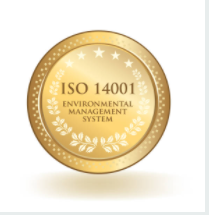Introduction
ISO 14001 is a globally recognized standard for Environmental Management Systems (EMS), providing organizations with a framework to manage their environmental responsibilities effectively. Developed by the International Organization for Standardization (ISO), the standard helps businesses minimize their environmental impact, comply with regulations, and demonstrate a commitment to sustainability. As environmental concerns grow, ISO 14001 certification has become a vital tool for organizations across industries, from manufacturing to services, seeking to balance profitability with ecological responsibility. This article explores the significance of ISO 14001 certification, its key requirements, the certification process, the benefits for organizations, and the challenges involved, offering a comprehensive guide for businesses aiming to achieve environmental excellence.
Significance of ISO 14001 Certification
ISO 14001 certification signals an organization’s dedication to reducing its environmental footprint while maintaining operational efficiency. It is a voluntary standard that applies to organizations of all sizes and sectors, helping them identify, manage, and mitigate environmental risks, such as pollution, resource depletion, and waste generation. The certification is particularly significant in industries with high environmental impact, such as manufacturing, construction, and energy, where regulatory compliance and stakeholder expectations are stringent.
The certification enhances an organization’s reputation by demonstrating a proactive approach to environmental stewardship, appealing to environmentally conscious consumers, investors, and partners. It also facilitates compliance with environmental regulations, reducing the risk of fines or legal action. Globally recognized, ISO 14001 certification enables organizations to compete in international markets, where sustainability credentials are increasingly a prerequisite for contracts and partnerships. By fostering a culture of continuous improvement, the standard encourages organizations to innovate, adopt sustainable practices, and contribute to global efforts to combat climate change and environmental degradation.
Key Requirements of ISO 14001
ISO 14001:2015 outlines a structured approach to environmental management, with specific requirements that organizations must meet to achieve certification. These include:
-
Environmental Policy: Organizations must develop a policy that reflects their commitment to environmental protection, compliance with legal requirements, and continuous improvement. This policy must be communicated to all stakeholders.
-
Planning: Conduct an environmental review to identify significant environmental aspects (e.g., energy use, emissions, or waste) and associated risks. Set measurable objectives and develop plans to address these aspects, ensuring compliance with applicable regulations.
-
Implementation and Operation: Establish processes, roles, and resources to support the EMS. This includes training employees, documenting procedures, and ensuring effective communication to implement environmental objectives.
-
Monitoring and Improvement: Monitor and measure environmental performance, conduct internal audits, and review the EMS to ensure its effectiveness. Corrective actions must be taken to address non-conformities and drive continuous improvement.
These requirements are based on the Plan-Do-Check-Act (PDCA) cycle, ensuring a systematic approach to managing environmental impacts while aligning with organizational goals.
The Certification Process
Achieving certificazione 14001 (14001 certification) involves a structured process that requires planning, implementation, and verification. The key steps are:
-
Gap Analysis: Assess current environmental practices against ISO 14001 requirements to identify gaps and areas for improvement, such as inadequate waste management or lack of documentation.
-
Develop an EMS: Create an Environmental Management System tailored to the organization’s operations, incorporating an environmental policy, objectives, and procedures to address significant environmental aspects.
-
Implementation: Integrate the EMS into daily operations, training staff, updating processes, and documenting activities to ensure compliance with the standard.
-
Internal Audit: Conduct an internal audit to evaluate the EMS’s effectiveness and identify any non-conformities. This step prepares the organization for the external audit.
-
Engage a Certification Body: Select an accredited certification body to perform an external audit. The audit occurs in two stages: a documentation review (Stage 1) to assess readiness and a comprehensive audit (Stage 2) to verify implementation and compliance.
-
Certification and Maintenance: Upon successful audit, the organization receives ISO 14001 certification, valid for three years, subject to annual surveillance audits. Continuous improvement and regular reviews are essential to maintain certification.
This process ensures that the EMS is robust, effective, and aligned with global environmental standards.
Benefits of ISO 14001 Certification
ISO 14001 certification offers a range of benefits that enhance organizational performance and sustainability. Key advantages include:
-
Regulatory Compliance: The certification ensures adherence to environmental laws and regulations, reducing the risk of penalties or legal issues.
-
Cost Savings: By optimizing resource use (e.g., energy, water, and materials) and reducing waste, organizations can achieve significant cost reductions. For example, energy-efficient processes can lower utility bills.
-
Enhanced Reputation and Market Access: Certification appeals to environmentally conscious stakeholders, strengthening brand reputation and enabling access to markets where sustainability is a priority, such as government contracts or international supply chains.
-
Risk Management and Sustainability: ISO 14001 helps organizations identify and mitigate environmental risks, fostering sustainable practices that contribute to long-term viability and resilience.
These benefits not only improve operational efficiency but also position organizations as leaders in environmental responsibility, aligning with global sustainability goals.
Challenges in Achieving and Maintaining ISO 14001 Certification
While ISO 14001 certification is highly beneficial, it comes with challenges that require careful management:
-
Resource Investment: Developing and implementing an EMS demands significant time, financial resources, and expertise. Small businesses may find the costs of training, audits, and system upgrades particularly challenging.
-
Complexity of Implementation: Identifying significant environmental aspects and integrating them into an EMS can be complex, especially for organizations with diverse operations or limited environmental expertise.
-
Employee Engagement: Successful implementation requires buy-in from all levels of the organization. Resistance to change or lack of awareness can hinder progress, necessitating comprehensive training and communication.
-
Maintaining Compliance: Ongoing compliance requires regular monitoring, audits, and updates to the EMS to reflect changes in regulations or operations. This demands sustained commitment and resources.
To address these challenges, organizations can leverage consultants, invest in employee training, and use technology to streamline documentation and monitoring processes.
Conclusion
ISO 14001 certification is a powerful tool for organizations committed to environmental responsibility and sustainable operations. By meeting the standard’s requirements, businesses can reduce their environmental impact, ensure regulatory compliance, and enhance their reputation in a competitive global market. The certification process, though demanding, delivers significant benefits, including cost savings, improved risk management, and access to new opportunities. Despite challenges such as resource demands and implementation complexity, the long-term advantages of ISO 14001 certification make it a worthwhile investment. As environmental concerns continue to shape business practices, ISO 14001 certification remains a critical step for organizations striving to achieve excellence, contribute to sustainability, and build trust with stakeholders worldwide.



